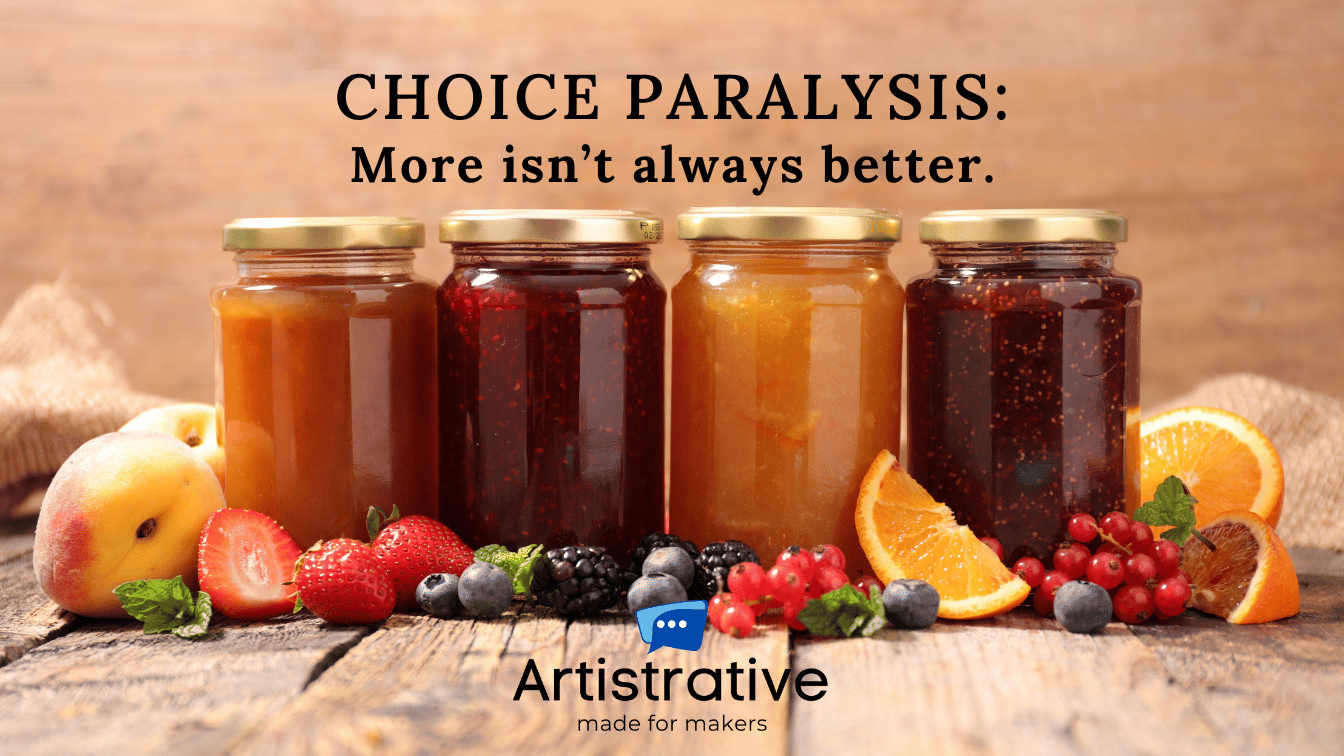Marketers often believe that offering a wider range of options increases the likelihood of customers making a purchase. For example, having 50 different styles of hats rather than just two can improve the chances of shoppers finding a suitable one. However, research has proven that too much choice can have negative consequences. Customers may be less likely to make a purchase and even if they do, they may be less satisfied with their decision. Excessive choice can actually lead to “choice paralysis” where individuals feel overwhelmed and find it difficult to make a decision, regardless of the quality of the available options.
What is Choice Paralysis?
When individuals are faced with an extensive selection of choices, they may experience what is known as choice paralysis, also referred to as overchoice, choice overload, or the paradox of choice. Although we often believe that having more options is beneficial, studies have demonstrated that it can be more challenging to make decisions when presented with a greater number of possibilities.
What studies? I’m glad you asked.
One of the most renowned experiments in consumer psychology is the Jam Study, conducted by Sheena Iyengar from Columbia University and Mark Lepper from Stanford University. Their study, titled “When Choice is Demotivating: Can One Desire Too Much of a Good Thing?” is commonly known as the Jam Experiment.
During this experiment, they set up a display table in a market featuring 24 different varieties of jam on one day, and only six types of jam on another day. The results revealed that although the larger display generated more interest, it actually led to significantly fewer purchases than the smaller display (about ten times less likely). What Iyengar and Lepper discovered was that while more choices may generate curiosity, it could also lead to decision fatigue and lower the likelihood of making a purchase.
The findings of the Jam Study demonstrate that although having a variety of options may initially appear attractive, having too many choices can lead to negative outcomes. In fact, the study revealed that offering consumers fewer choices can actually increase sales.
Since the publication of the Jam Study in 2000, numerous other studies in fields such as food and clothing have produced similar results. These outcomes challenge our conventional understanding of human nature and the factors that contribute to our well-being. Traditionally, both psychology and business have operated on the belief that having more choices equates to greater well-being. However, it appears that in reality, more choices are not always better, neither for the consumer nor the retailer.
So what about my craft show display?
When it comes to exhibiting at a craft show or event, it’s important to keep in mind that less really is often more. It can be tempting to bring as many products as possible to showcase the full range of what you have to offer. However, an exhibit that is overflowing with products can look too busy and give off the impression of a disorganized flea market rather than a professional and curated presentation.
An exhibit that is too full can make it difficult for prospects to view and navigate. If your display is too cluttered this can create a barrier to entry, inhibiting potential customers from entering or shopping at your booth and exploring your products.
To avoid overwhelming your audience, it’s important to be selective in the products you bring to an event and not to overcrowd your space with too much product. Consider bringing only your biggest sellers or key new products that you want to promote. You can also leave product under the table for replenishing as you make sales, rather than try and place it all on display at once. By doing so, your display will be more visually appealing; it is easier for your customers to view your products, and presents a clear and focused message to your audience.
This approach has been proven effective by many successful exhibitors who have experienced increased results after making the change. By streamlining your exhibit, making sure it is not too cluttered, and focusing on your most important products, you can create a more impactful, enjoyable, and memorable experience for your audience – and increase your sales.
I know it sounds upside down, but sometimes less truly is best.
FOLLOW ME on social media for more tips and information: FACEBOOK | INSTAGRAM
